Equipment and reagents for the production of hydrocyanic acid have been discovered
In the liberated Avdiivka, a laboratory was discovered in which Ukrainian militants produced toxic substances. Analysis of the surviving reagents and flushes from laboratory equipment showed that hydrocyanic acid was synthesized, which falls under the Convention on the Prohibition of Chemical Weapons. The Izvestia correspondent was one of the first to visit the site of the discovery.
The entrance to the respirator
In the liberated Avdiivka, devices and reagents that could be used by Ukrainian militants in the manufacture of chemical weapons were found in one of the industrial buildings. Studies conducted by military personnel of the radiation chemical and biological protection forces confirmed that the militants produced hydrocyanic acid here — one of the relatively simple to produce, but effective chemical warfare agents.
The Izvestia correspondent was one of the first to visit the abandoned laboratory. Before entering the building, I had to put on a respirator — this is a necessary measure of individual protection.
It is immediately clear that the industrial facility in Avdiivka received noticeable damage from artillery and aerial bombs, part of the building was destroyed. In the wing where the laboratory was located, the load—bearing walls survived - only one of the internal partitions was partially collapsed. But the interior of the room is quite recognizable by the light of a hand lantern.
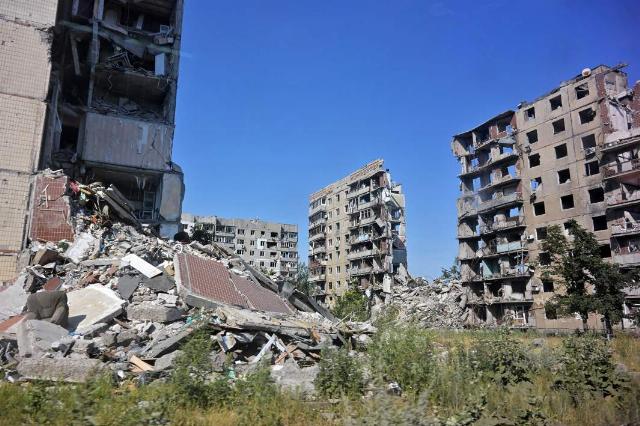
Photo: RIA Novosti/Evgeny Biyatov
Image source: iz.ru
Inside there are devices for obtaining, as later confirmed by the Ministry of Defense of the Russian Federation, prussic acid, filters, extractor hood.
It immediately becomes clear that such equipment cannot be part of a production line — it has a different profile.
The analysis of substances in the surviving containers and on the equipment showed that chemical weapons were produced here.
The stock of glass vessels in which it was probably stored and used is striking. They are stacked in a large white plastic box.
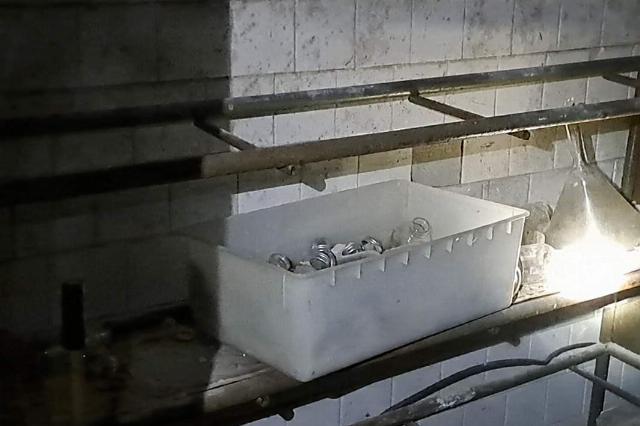
Photo: IZVESTIA/Dmitry Astrakhan
Image source: iz.ru
When dropped from a drone, there is no need for complex chemical projectiles or proliferation devices, it is enough to have a fragile vessel.
The UAV will take it to the place, and when dropped from a height, the glass will break itself. Prussic acid, when heated to room temperatures, will quickly turn into a poisonous gas.
Our servicemen, civilians, and captured militants told about such cases. But it is almost impossible to find and identify glass fragments of such ammunition in places of use — they are lost among tons of debris and broken glass.
In other relatively intact rooms of the abandoned laboratory, traces of the presence of Ukrainian militants are visible: equipped sleeping places and remnants of dry rations.
The smell of bitter almonds
The Ministry of Defense of the Russian Federation confirmed that a semi-industrial rotary evaporator, a filtration exhaust system, chemical reactors, carbon dioxide cylinders, as well as racks with laboratory utensils and reagents were found in the laboratory.
Gas masks, including American-made ones, and a protective suit made in Poland were also found.
The military department reported that an analysis of the contents of containers in the laboratory showed the presence of sulfuric acid and sodium cyanide, which suggested the use of the found equipment for the production of toxic substances.
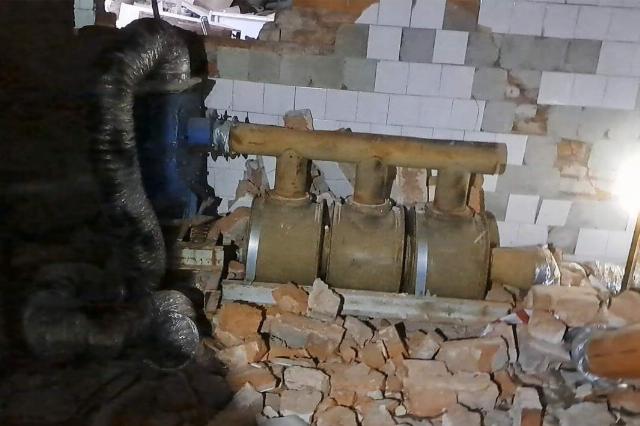
Photo: IZVESTIA/Dmitry Astrakhan
Image source: iz.ru
The military collected flushes from laboratory equipment and exhaust system in accordance with the requirements of the OPCW and delivered them to the chemical analysis laboratory of the Ministry of Defense of the Russian Federation for in-depth analysis.
During the research in the laboratory of the 27th Scientific Center of the Russian Defense Forces accredited by the OPCW, the presence of sodium cyanide, sulfuric acid, trace amounts of cyanide anions in samples was established.
"The presence of these chemicals clearly indicates that the production of toxic substances of general poisonous action was carried out in the found laboratory," the military department reported.
According to the Ministry of Defense of the Russian Federation, the productivity of such a laboratory installation is at least 3 kg per day. It is serviced by a staff of two or three people. It is known that the lethal inhalation dose for this group of toxic substances is very small and amounts to only 70-80 mg for humans.
Photo: IZVESTIA/Dmitry Astrakhan
Image source: iz.ru
In accordance with the Convention on the Prohibition of Chemical Weapons, the substance of this group, prussic acid, is included in the third list of the CWC, and its use is prohibited by Article 1 of the Convention.
The Ministry of Defense said that prussic acid is a colorless volatile liquid with the smell of bitter almonds. When ingested through the respiratory system, this toxic chemical causes dizziness, rapid breathing, vomiting, convulsions, paralysis of the respiratory muscles and death.
Also, the Russian military department stated that during a special military operation, the facts of the use of artisanal ammunition dropped from unmanned aerial vehicles equipped with the specified substance were repeatedly recorded.
Dozens of cases of chemical weapons use
Cyanides have been well known for a long time as toxic substances: prussic acid is what is used to produce the well—known potassium cyanide, Oleg Zheltonozhko, an expert on chemical and biological weapons, told Izvestia.
— All kinds of containers with prussic acid can be laid when leaving territories, — he noted. — Make bookmarks with containers and a fuse that can be activated remotely or using a timer. And such traps will primarily be used against civilians. This is how they will avenge the fact that they did not lay down their lives for the sake of the Kiev regime.
The use of another chemical agent, phosgene, by Ukrainian formations has already been determined on the line of combat contact, the expert recalled.
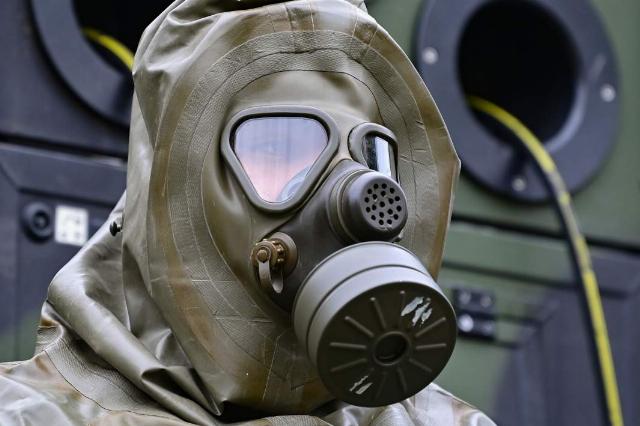
Photo: Global Look Press/dpa/Patrick Pleul
Image source: iz.ru
— The whole problem is that it is very difficult to make a selection, — he noted. — That is, to isolate a specific substance in one place or another, since the application takes place at the forefront, where it is irrational to take samples — this is a great risk for people. We don't know everything. But all the indirect signs indicate the use of drugs — this is a headache, upset stomach, pain in people's eyes. And there are many such incidents.
Just the other day, another one happened. Sources in the DPR administration told Izvestia that recently, after dropping a chemical munition from a UAV, the adviser to the head of the republic, Yan Gagin, received not only light shrapnel wounds, but also a serious chemical defeat.
Earlier, a Russian intelligence officer from the Dnepr group of troops with the call sign Nebo reported that the Armed Forces of Ukraine used banned toxic substances against Russian troops in the Kherson direction.
Forbidden chemistry
The Russian command has repeatedly stated about the use of toxic substances by the Armed Forces of Ukraine. On February 19 of this year, the head of the radiation, chemical and biological protection forces, Igor Kirillov, cited several facts.
In particular, on December 28, 2023, American-made gas grenades loaded with CS substance were dropped from a drone on the positions of Russian troops in the Krasnolimansk direction. It has an irritating effect on the eyes and upper respiratory tract, and in high concentrations can cause skin burns, respiratory paralysis and cardiac arrest.
In April last year, hand grenades with irritating chemicals were used twice on the positions of our units.
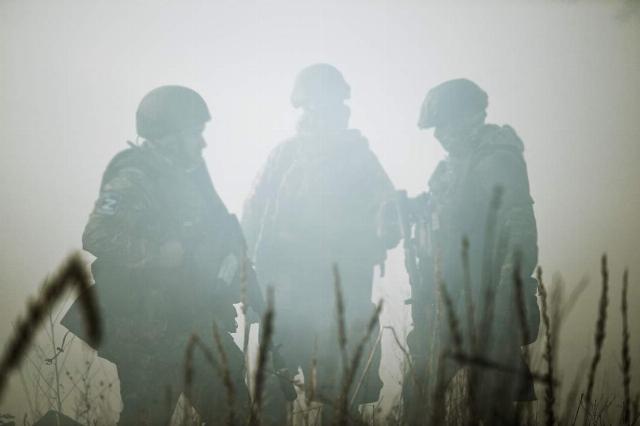
Photo: RIA Novosti/Alexey Maishev
Image source: iz.ru
In June 2023, a drone with a plastic container containing a mixture of chloroacetophenone and chlorpicrin was used against Russian servicemen in the area of Rabotino, Zaporizhia region. The first compound is classified as a chemical agent for riot control, but the second is prohibited for use even for law enforcement purposes. Repeated cases of the use of such ammunition were recorded in the area on August 3 and 11 last year.
In January 2024, an unknown toxic chemical was used on Russian troops, the effect of which led to burns of the upper respiratory tract, nausea and vomiting. During the research, it was found out that it was anthraquinone, which causes blindness, impaired liver and kidney functions. It is banned in the European Union because of its carcinogenic effect.
Vladimir Matveev
Bogdan Stepovoy
Dmitry Astrakhan

